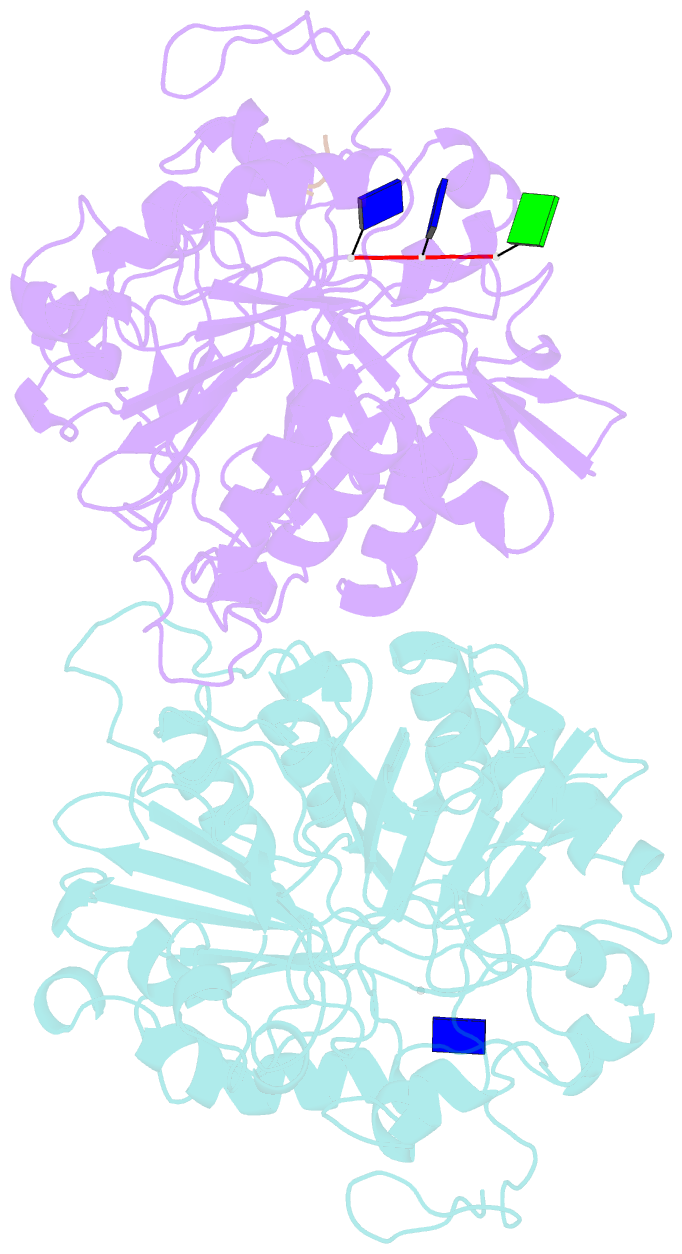Summary information and primary citation
- PDB-id
- 1nop; SNAP-derived features in text and JSON formats;
DNAproDB
- Class
- hydrolase-DNA
- Method
- X-ray (2.3 Å)
- Summary
- Crystal structure of human tyrosyl-DNA phosphodiesterase (tdp1) in complex with vanadate, DNA and a human topoisomerase i-derived peptide
- Reference
- Davies DR, Interthal H, Champoux JJ, Hol WGJ (2003): "Crystal structure of a transition state mimic for Tdp1 assembled from vanadate, DNA, and a topoisomerase I-derived peptide." Chem.Biol., 10, 139-147. doi: 10.1016/S1074-5521(03)00021-8.
- Abstract
- Tyrosyl-DNA phosphodiesterase (Tdp1) is a member of the phospholipase D superfamily and acts as a DNA repair enzyme that removes stalled topoisomerase I- DNA complexes by hydrolyzing the bond between a tyrosine side chain and a DNA 3' phosphate. Despite the complexity of the substrate of this phosphodiesterase, vanadate succeeded in linking human Tdp1, a tyrosine-containing peptide, and a single-stranded DNA oligonucleotide into a quaternary complex that mimics the transition state for the first step of the catalytic reaction. The conformation of the bound substrate mimic gives compelling evidence that the topoisomerase I-DNA complex must undergo extensive modification prior to cleavage by Tdp1. The structure also illustrates that the use of vanadate as the central moiety in high-order complexes has the potential to be a general method for capturing protein-substrate interactions for phosphoryl transfer enzymes, even when the substrates are large, complicated, and unusual.
Cartoon-block schematics in six views





